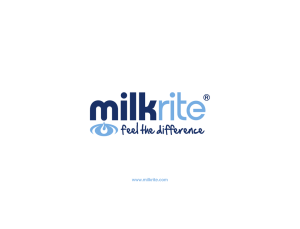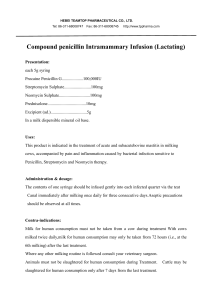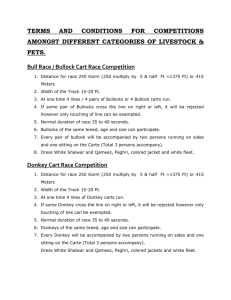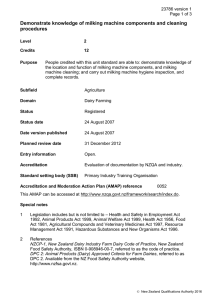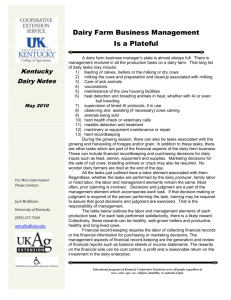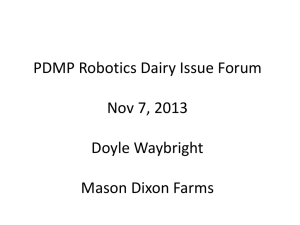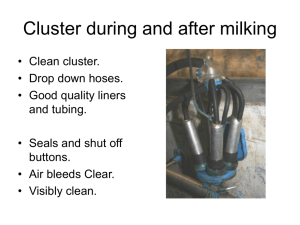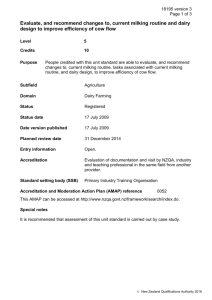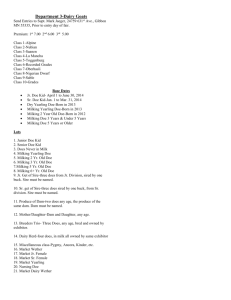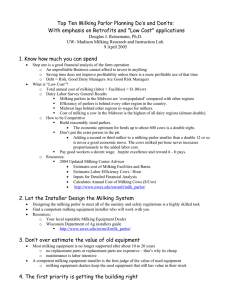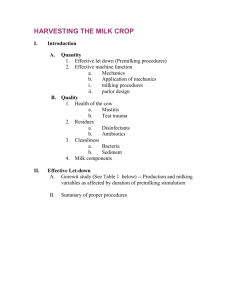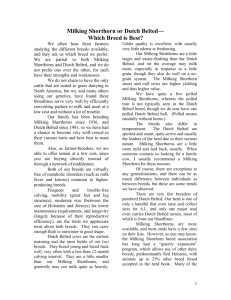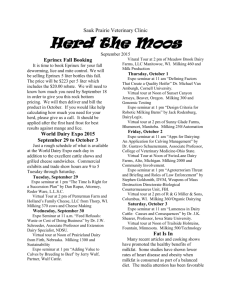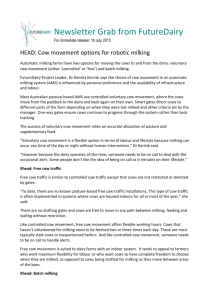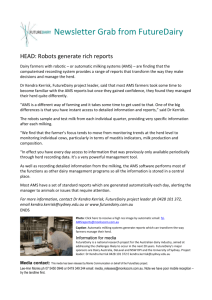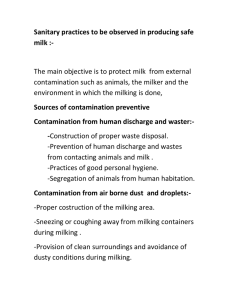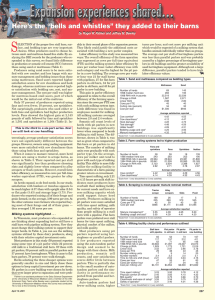Composition and Settling Characteristics of Milking Center
advertisement
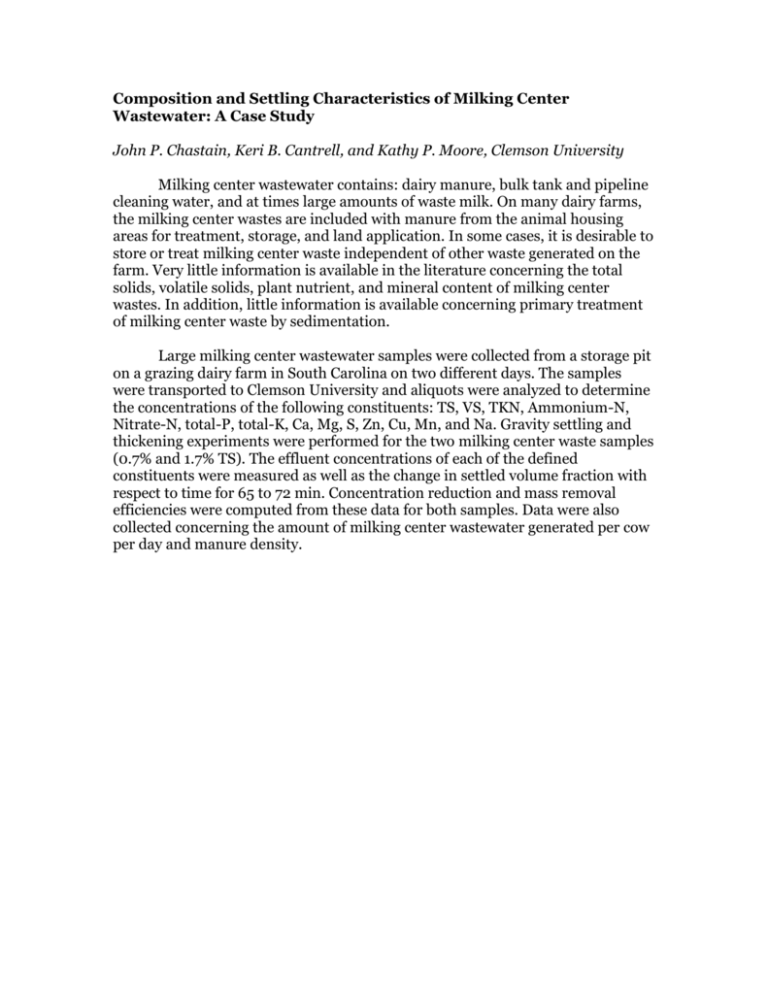
Composition and Settling Characteristics of Milking Center Wastewater: A Case Study John P. Chastain, Keri B. Cantrell, and Kathy P. Moore, Clemson University Milking center wastewater contains: dairy manure, bulk tank and pipeline cleaning water, and at times large amounts of waste milk. On many dairy farms, the milking center wastes are included with manure from the animal housing areas for treatment, storage, and land application. In some cases, it is desirable to store or treat milking center waste independent of other waste generated on the farm. Very little information is available in the literature concerning the total solids, volatile solids, plant nutrient, and mineral content of milking center wastes. In addition, little information is available concerning primary treatment of milking center waste by sedimentation. Large milking center wastewater samples were collected from a storage pit on a grazing dairy farm in South Carolina on two different days. The samples were transported to Clemson University and aliquots were analyzed to determine the concentrations of the following constituents: TS, VS, TKN, Ammonium-N, Nitrate-N, total-P, total-K, Ca, Mg, S, Zn, Cu, Mn, and Na. Gravity settling and thickening experiments were performed for the two milking center waste samples (0.7% and 1.7% TS). The effluent concentrations of each of the defined constituents were measured as well as the change in settled volume fraction with respect to time for 65 to 72 min. Concentration reduction and mass removal efficiencies were computed from these data for both samples. Data were also collected concerning the amount of milking center wastewater generated per cow per day and manure density.

